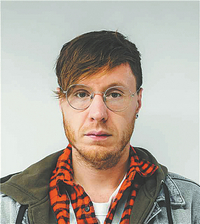

There are a number of things one might associate with the history and culture of China: the Great Wall, the Forbidden City, the cuisine. But there is perhaps one that stands out above all others in the minds of those in English-speaking countries, to the point where it is known by the same name as the country itself, and that is china (with a small c).
The beauty of this china, or porcelain, was, and still is, renowned across the globe. It was once exported throughout Asia and the wider world along the Silk Road and other trade routes, and perhaps the most interesting aspect of this, is that it all hailed from a small town in Jiangxi province named Jingdezhen. There are countless locations that have played a crucial role in the long and storied history of China, and despite being less well-known to the outside world, Jingdezhen must be counted among these.
Originally known as Changnan, due to its proximity to the Chang River, the area has been producing porcelain for over a thousand years. Using the river to transport the necessary raw materials and to export the finished products, the town soon grew in size and importance.
During the Liao Dynasty (916-1125), Emperor Zhenzong was enchanted by the area's porcelain products and gave his permission for its ceramics to bear his name moving forward. The town was then renamed after the emperor's reign "Jingde", along with the suffix "zhen", meaning town.
Jingdezhen went on to have a fascinating and storied history that I confess I knew next to nothing about until having the chance to visit recently as part of a media tour. Despite hearing about its prominent place in Chinese history from colleagues before arriving, I was somewhat skeptical that such a small town (now a city) could play such a huge role in the porcelain industry, and from my limited perspective, remain so obscure.
But throughout my tour, I soon learned the true value and importance of Jingdezhen and the industry that permeates through every corner of its streets. It was a trip packed with visits to porcelain museums, art villages and ceramic galleries, where I even got to see the Speechless Buddha sculpture, which has become a recent viral hit online.
Despite learning a great deal about the porcelain industry and its history through this tour, it wasn't until I took to the streets in the early morning for a run (a habit of mine when I travel), that I got a real feel for Jingdezhen itself. By city standards, it is not a big place, so I was able to take in a lot of the older hutong along the Chang River and some of the ancient buildings that still stand to this day. And no matter what route I took, there was one thing that was ever present, porcelain. This white clay runs proudly through the veins of Jingdezhen and in the short time I was there, it became abundantly clear how vital this industry was, and still is, to the city, and the importance of the city in the history of porcelain and its current revival.
Jingdezhen is a beacon for young artists and creatives looking to hone their skills in the heart of the porcelain industry. A unique atmosphere and burgeoning arts scene fills the city and gives it a flavor unlike many of China's larger cities, which focus on the fast-paced world of modern business and industry.
Contact the writer at michaelrhyscard@chinadaily.com.cn
